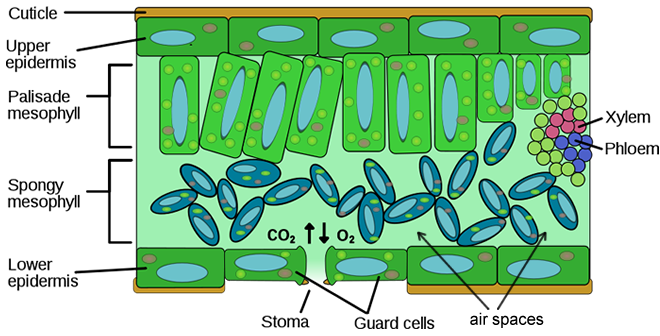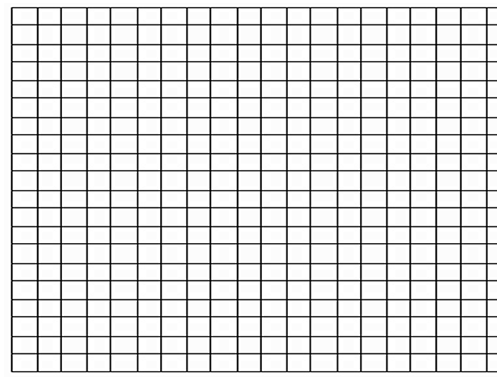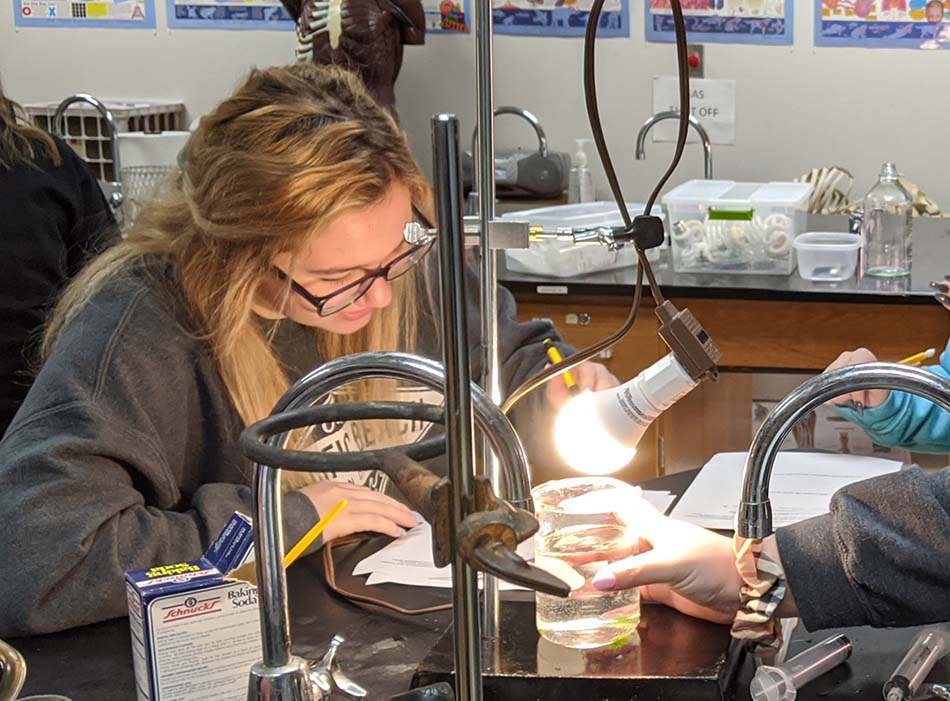AP Biology - Investigation: Photosynthesis
Background and PreLab (View as Google Doc)
Photosynthesis fuels ecosystems and replenishes the Earth's atmosphere with oxygen. Like all enzyme-driven reactions, the rate of photosynthesis can be measured by either the disappearance of substrate, or the accumulation of products. The equation for photosynthesis is:
6CO2 + 6H2O ------light--------> C6H12O6 + 6O2 + H20
To determine the rate of photosynthesis, you could measure the production of oxygen, which is released when photosynthesis occurs or the consumption of carbon dioxide.
Leaf Structure and Function
In this investigation, you will use a system that measures the accumulation of oxygen in the leaf. Consider the anatomy of the leaf. The leaf is composed of layers of cells. The spongy mesophyll layer is normally infused with gases, oxygen and carbon dioxide. Leaves (or disks cut from leaves) will normally float in water because of these gases. If you draw the gases out from the spaces, then the leaves will sink because they become more dense than water. If this leaf disk is placed in a solution with an alternate source of carbon dioxide in the form of bicarbonate ions, then photosynthesis can occur in a sunken leaf disk. As photosynthesis proceeds, oxygen accumulates in the air spaces of the spongy mesophyll. The leaf becomes buoyant and floats.
While this is going on, the leaf is also carrying out cellular respiration. This respiration will consume the oxygen that has accumulated and possibly cause the plant disks to sink. In other words, the buoyancy of the leaf disk is actually an indirect measurement of the NET rate of photosynthesis occurring in the leaf tissue.
Experimental Question: What factors affect the rate of photosynthesis?
Pre-lab Questions - these should be completed before the scheduled lab.
1. How can the rate of photosynthesis be measured?
2. Where in the cell of the leaf do you find air spaces?
What is the function of the stomata?
3. What will happen if you remove the air from these spaces?
How will air return to these spaces?
4. Instead of carbon dioxide, what will be used to as the reactant in this lab?
5. List any factors that you think may affect the rate of photosynthesis. Consider environmental factors that you could manipulate during the lab.
Materials:
Baking soda | Liquid soap | Plastic syringes (10 mL or larger) | Leaves (spinach or ivy) | Hole punch or Straws | Cups or beakers | Timer | Light source
Procedure
1. Collect leaf disks by punching holes in the dark green portion of a leaf (try to get them between the veins). You will a total of 20 disks.
2. Make a solution of sodium bicarbonate by mixing 300 ml of water to a pinch of baking soda.
3. Make a diluted solution of liquid detergent (2 drops of soap to 100 mL of water) - do not generate suds).
4. Add one drop of this dilute soap solution to your 300 ml bicarbonate solution –.
5. Place 10 leaf disks into the syringe and pull in a small volume of the bicarbonate and soap solution. Replace the plunger and push out most of the air, but do not crush your leaves.
6. Create a vacuum by covering the tip of the syringe with your finger. Draw back the plunger.
7. Release the vacuum so that the solution will enter the disks. It may take a few times to get the disks to sink.
8. Once they have sank, you can put them back into the sodium bicarbonate solution and expose the disks to light.
9. Repeat steps 5-7 with another set of 10 disks. Place this set into a control beaker that contains only water and expose to light.
10. Record the number of disks floating at the end of each minute, swirl the disks to dislodge any that may get stuck to the beaker or to each other. The experiment should continue until all the disks are floating.
11. Repeat steps 1-10 to record data on disks that are not exposed to light.
Data Table
| Time (min) | Light/Baking Soda | Light / No baking soda | No light/ Baking Soda | No light / Baking soda |
| 1 | ||||
| 2 | ||||
| 3 | ||||
| 4 | ||||
| 5 | ||||
| 6 | ||||
| 7 | ||||
| 8 | ||||
| 9 | ||||
| 10 | ||||
| 11 | ||||
| 12 | ||||
| 13 | ||||
| 14 | ||||
| 15 |
Analysis
Analysis: To make comparisons between experiments, a standard point of reference is needed. Repeated testing of this procedure has shown that the point at which 50% of the disks are floating (ET50) is a reliable and repeatable point of reference.
Graph your data for the experiment. X-axis is Time (min) and Y-axis is # floating disks.
Be sure to include a key for each sample set. There should be four lines on your graph. Determine the ET50 for each set of leaf disks.
Conclusion:
What is the relationship between the variables aand photosynthesis rate? This is your CLAIM.
What evidence supports those claims (summarize data)?
Provide reasoning that linke the evidence and the claim and explains why this relationship exists. A discussion of photosynthesis is appropropriate in this section.



